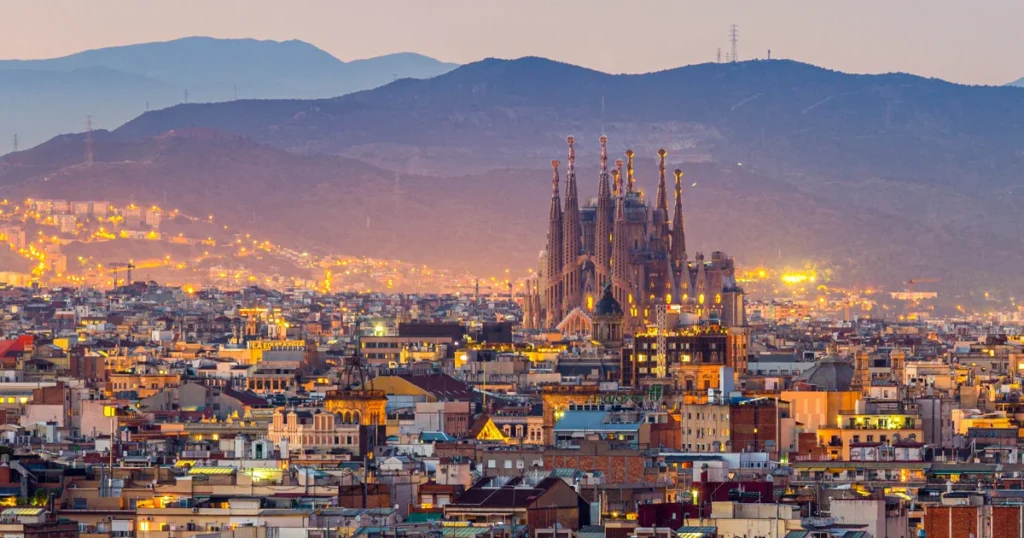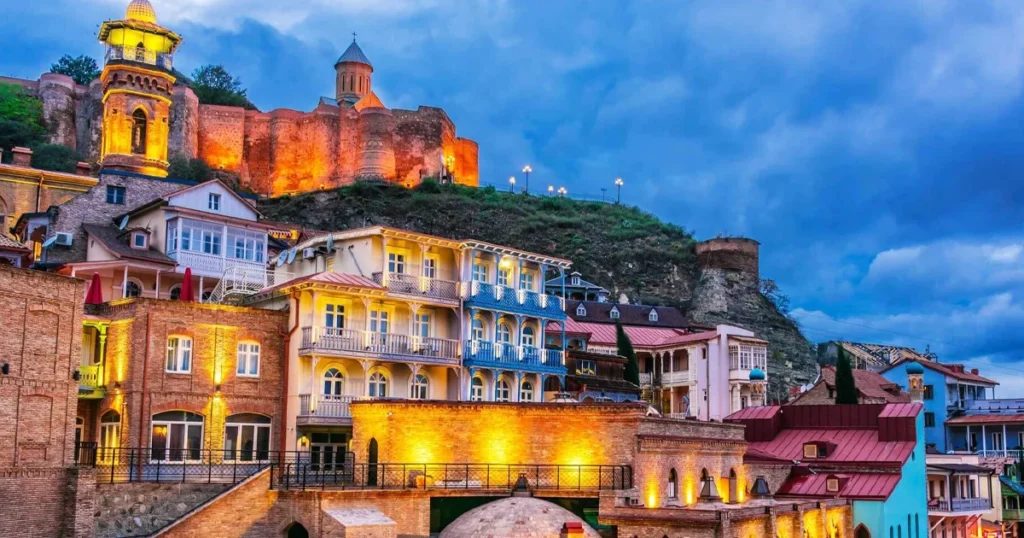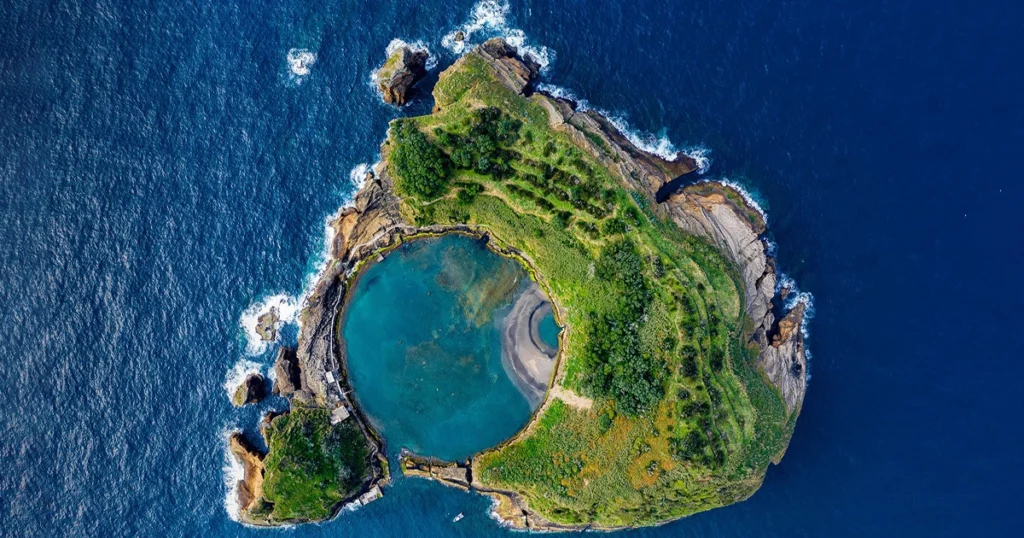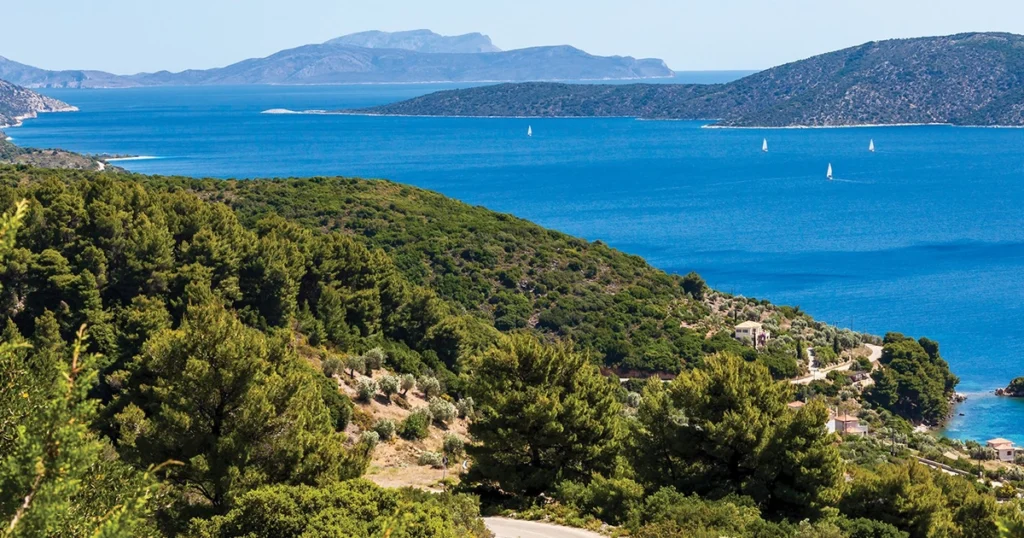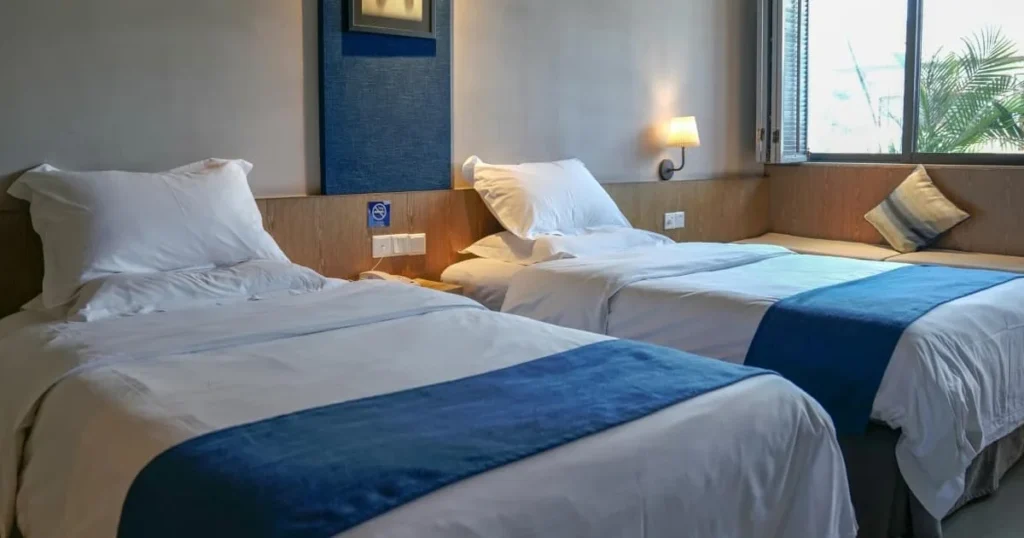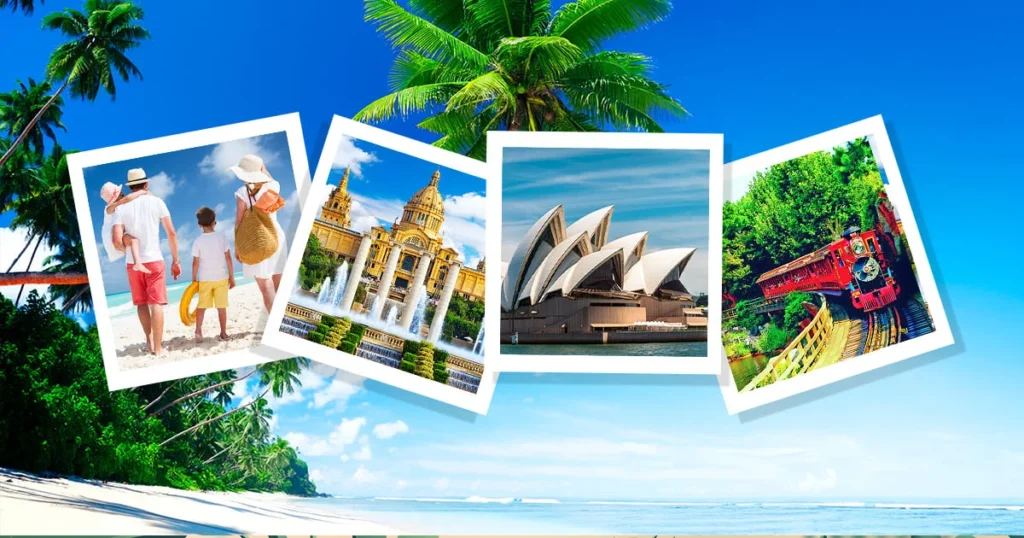Chasing Waterfalls and Northern Lights: A Winter Adventure in Iceland
Iceland in winter is a realm where nature’s artistry reaches its zenith, transforming the land into a canvas of frost and light. Picture frozen waterfalls suspended in mid-air, their crystalline edges glinting under the pale Arctic sun; valleys blanketed in snow, so still and vast they seem to swallow time itself; and above it all, the aurora borealis a celestial ballet of emerald and violet ribbons swirling across the sky. This is a world where ice and fire coexist, where geothermal springs steam against sub-zero air, and glaciers carve paths through ancient volcanic landscapes.
A winter journey through Iceland is not merely a trip but an immersion into the surreal. It is a place where adventure and tranquility intertwine: hiking across glacial tongues, exploring ice caves shimmering like sapphire labyrinths, or standing beneath the cosmic dance of the Northern Lights, feeling the universe’s quiet awe. Here, cascading ice formations and celestial light shows do more than captivate they redefine the very essence of natural wonder, inviting travelers to witness Earth’s raw, untamed beauty in its most enchanting form. In Iceland’s winter embrace, the ordinary dissolves, leaving only the extraordinary.
Chapter 1: Frozen Wonders – Iceland’s Iconic Waterfalls
A. Skógafoss: The Power of Winter
Skógafoss, one of Iceland’s most photographed waterfalls, becomes a frozen titan in winter, its 60-meter plunge halted mid-motion by sub-zero temperatures. The cascade freezes into a jagged wall of blue-white ice, resembling a glacier calved vertically. The constant mist from the falls crystallizes into surreal ice formations: delicate hoarfrost feathers, bulbous icicles, and glass-like sheets that cling to the surrounding cliffs. The interplay of light here is magical sunlight refracts through the ice, casting prismatic hues, while the spray freezes into “ice caves” beneath the falls, accessible only to those brave enough to navigate the treacherous rocks.
Hike the Stairs : The 370-step staircase to the overlook is a lung-busting challenge, but the view from the top is unparalleled. The frozen river Skógá stretches toward the horizon, flanked by black sand plains and the distant Eyjafjallajökull glacier. On clear days, the Westman Islands glint offshore. For photographers, sunrise paints the falls in soft pinks and golds, while midday light highlights the ice’s turquoise depths.
Behind the Falls : The path behind Skógafoss is often closed in winter due to ice, but if open, it offers a thunderous, immersive experience. The roar of water echoes inside the ice cavern, and the cliffside trail reveals hidden ice tunnels formed by centuries of freeze-thaw cycles. Legend claims a Viking treasure is buried here look for the faint outline of a chest carved into the rockface by local lore.
B. Seljalandsfoss: A Backlit Ice Curtain
Seljalandsfoss, with its iconic walk-behind trail, transforms into a luminous ice curtain in winter. The water freezes in undulating sheets, creating a translucent barrier that glows like alabaster when sunlight filters through. The cliffs on either side are draped in mossy ice, and the pool below is a mosaic of cracked ice plates, resembling a frozen mosaic.
Walking Behind the Falls : The path is a slippery gauntlet, often coated in black ice. Spikes and waterproof boots are non-negotiable. As you edge behind the falls, the world narrows to a tunnel of ice, the roar of water muffled by the frozen veil. Look for hexagonal ice patterns formed by trapped air bubbles a phenomenon called “fracture ice.” On windy days, the spray freezes mid-air, creating a misty haze that clings to your eyelashes.
Photography Tips : Shoot at dawn to capture the falls backlit by golden light, or during a snowstorm for a moody, monochromatic scene. Drones are prohibited, but wide-angle lenses capture the falls’ scale. Local guides warn of sudden icefalls stay alert.
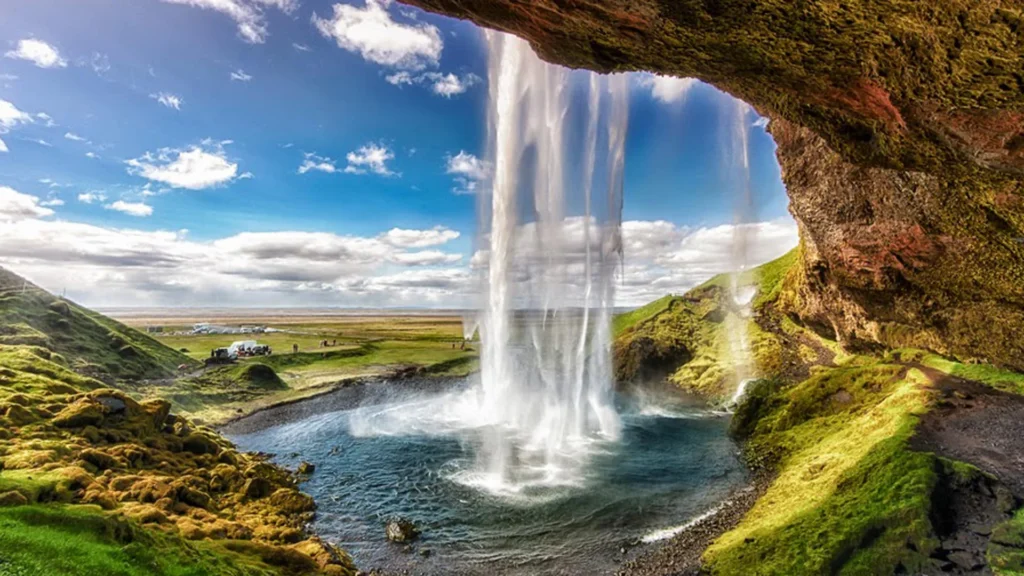
C. Goðafoss: The Waterfall of the Gods
Goðafoss, where Iceland’s conversion to Christianity began in 1000 CE, is a study in contrasts. The horseshoe-shaped falls freeze partially in winter, creating a layered tableau: the upper section a thunderous cascade, the lower pool a mirror of still ice. The basalt columns flanking the falls are frosted with rime ice, and the river Skjálfandafljót carves serpentine patterns in the ice below.
Historical Echoes : Thorgeir Hákonarson, the chieftain who declared Christianity Iceland’s official religion, supposedly threw pagan idols into the falls. Today, a modern sculpture nearby commemorates the event. Winter visitors often leave small offerings coins, trinkets in the ice as a nod to this legacy.
Aurora Magic : On clear nights, the Northern Lights dance above Goðafoss, their colors reflecting in the half-frozen pool. The falls’ mist rises like smoke, mingling with the aurora’s glow. Stay until midnight for the best views local guesthouses offer guided snowshoe tours.
D. Hidden Gems: Lesser-Known Falls
Hengifoss : Nestled in East Iceland, Hengifoss is a geologist’s dream. Its 128-meter drop freezes into tiers of red-and-white ice, formed by alternating layers of basalt and clay. The hike (6 km round-trip) traverses snow-covered lava fields and offers views of the fjord Lagarfljót. Look for ptarmigans camouflaged in the snow.
Svartifoss : In Skaftafell, Svartifoss (“Black Falls”) is framed by basalt columns reminiscent of a pipe organ. In winter, the columns ice over, creating a fortress-like backdrop. The falls freeze into dagger-like icicles, and the trail passes ice caves formed in hollowed-out lava tubes. Bring a thermos the nearby café sells hot chocolate with Icelandic Brennivín schnapps.
Gljúfrabúi : Near Seljalandsfoss, this “secret falls” hides in a mossy canyon. To reach it, wade through a freezing stream (hip boots recommended) to find a 40-meter cascade enclosed by walls of ice and rock. The spray creates delicate ice flowers on the canyon ledges.
Bruarfoss : A 90-minute drive from Reykjavík, Bruarfoss is a turquoise wonder in summer but a ghostly ice labyrinth in winter. Its braided streams freeze into intricate patterns, and the surrounding valley is a silent expanse of snow.
Practical Tips for Winter Visits :
- Gear : Crampons, waterproof layers, and a sturdy tripod for photography.
- Safety : Check road conditions (vegagerdin.is) and heed closure signs icefalls can be deadly.
- Guides : Local operators like South Coast Adventures offer ice-walking tours with glacier hikes.
In winter, Iceland’s waterfalls are not just sights but experiences a symphony of ice, light, and history. Each visit feels like stepping into a Norse saga, where nature’s power is both awe-inspiring and humbling.
Chapter 2: Hunting the Northern Lights – A Celestial Spectacle
A. When and Where to See the Aurora
Best Months & Timing
The Northern Lights (Aurora Borealis) are most visible in Iceland from late September to early April , when nights dominate the Arctic sky. Key nuances:
- Peak Seasons : September–October and February–March, coinciding with equinoxes, when geomagnetic activity is strongest.
- Winter Solstice (December 21) : Longest nights (up to 18–20 hours of darkness) maximize viewing opportunities.
- Moon Phase : A new moon enhances visibility by reducing ambient light. Use lunar calendars to plan trips.
Optimal Conditions
- Solar Activity :
- Track the KP index (0–9 scale), which measures geomagnetic storm intensity. KP ≥ 3 is visible in Iceland; KP ≥ 5+ offers vibrant displays.
- Monitor real-time forecasts via the Icelandic Meteorological Office or apps like Aurora Forecast and My Aurora Forecast .
- Weather :
- Prioritize clear skies . Use websites like Aurora Service Europe for cloud-cover maps.
- Coastal areas (e.g., South Coast) often have milder weather, while highlands may experience harsher conditions.
- Light Pollution :
- Escape Reykjavík’s glow by venturing to remote areas. The Westfjords , Snæfellsnes Peninsula , and Vatnajökull National Park offer pristine dark skies.
Prime Locations
- Þingvellir National Park :
- A UNESCO site where tectonic plates meet. The stark lava fields and rift valleys create a dramatic foreground.
- Bonus: Combine with the Northern Lights by Ice Cave tours in winter.
- Jökulsárlón Glacier Lagoon :
- Diamond-like icebergs float in glacial waters, reflecting the aurora. Nearby Diamond Beach offers black-sand contrast.
- Snæfellsnes Peninsula :
- The iconic Kirkjufell Mountain pairs with waterfalls like Grundarfoss to frame the lights.
- Westfjords :
- Remote and rugged, with minimal light pollution. Látrabjarg cliffs or Dynjandi waterfall provide epic backdrops.
- Reykjanes Peninsula :
- Closest to Reykjavík. Blue Lagoon or Gunnuhver geothermal area offer surreal juxtapositions of steam and auroras.
B. Photography Tips for Capturing the Lights
Gear Essentials
- Camera : Full-frame DSLR/mirrorless (e.g., Canon EOS R5, Sony A7IV) for superior low-light performance.
- Lenses :
- Wide-angle (14–24mm) with f/2.8 or wider aperture (e.g., Sigma 14–24mm f/2.8).
- Prime lenses (e.g., 24mm f/1.4) excel in sharpness and light gathering.
- Tripod : Carbon-fiber models (e.g., Manfrotto MT190X) resist wind and cold. Use a tripod with a hook to hang weight for stability.
- Accessories :
- Remote shutter/intervalometer for long exposures and timelapses.
- Extra batteries (cold drains power) and lens cloths to combat frost.
Camera Settings
- Manual Mode :
- Shutter Speed : 10–25 seconds. Shorter for dynamic auroras (10–15s); longer for faint displays (20–25s).
- Aperture : Widen to f/2.8–f/4 to maximize light.
- ISO : Start at 1600–3200. Adjust based on brightness (higher ISO for faint auroras; lower for vivid ones).
- White Balance : 3000–4000K (avoid auto-WB to prevent color casts).
- Focus :
- Switch to manual focus. Use live view to zoom in on a bright star or distant light to sharpen.
- Tape the focus ring to prevent accidental shifts.
- Composition :
- Include foreground interest: icebergs, churches, rivers, or geothermal vents.
- Use the rule of thirds: Position the aurora in the upper third, with land/water below.
Advanced Techniques
- Timelapse : Shoot 200–300 images over 1–2 hours. Use software like Lightroom or StarStaX to stack frames.
- Light Painting : Illuminate foregrounds with a flashlight (use warm tones for contrast).
- Panoramic Shots : Stitch multiple images for ultra-wide vistas.
C. Cultural Lore: Myths of the Aurora
Icelandic Folklore
- Birtukonur (Light Spirits) :
- Ethereal beings believed to dance across the sky, their flowing garments creating the aurora. Some tales describe them as the spirits of unmarried women or guardians of nature.
- Fishermen saw the lights as benevolent guides, while others warned that mocking the Birtukonur would bring misfortune.
- Childbirth Myth :
- Pregnant women were cautioned not to look at the aurora, fearing it would cause birthmarks or harm the child.
Norse Mythology
- Valkyries and Valhalla :
- The aurora was thought to be the armor of Valkyries , warrior maidens who chose slain heroes to join Odin in Valhalla. The shimmering lights were reflections of their shields or the glint of Bifröst, the rainbow bridge to the gods.
- Thor’s Storms :
- Some linked the lights to Thor’s battles, where his hammer Mjölnir struck the sky, creating ripples of energy.
Global Perspectives
- Sámi (Indigenous Scandinavians) : Believed the aurora was the energy of ancestors or reindeer spirits. They avoided whistling or gesturing at the lights, fearing retribution.
- Inuit (Arctic North America) : Thought the lights were spirits playing soccer with a walrus skull or ancestors communicating through the sky.
Modern Symbolism
- The aurora remains a symbol of Iceland’s untamed beauty, inspiring artists, writers, and musicians. Annual festivals like Winter Lights Festival in Ísafjörður celebrate its magic.
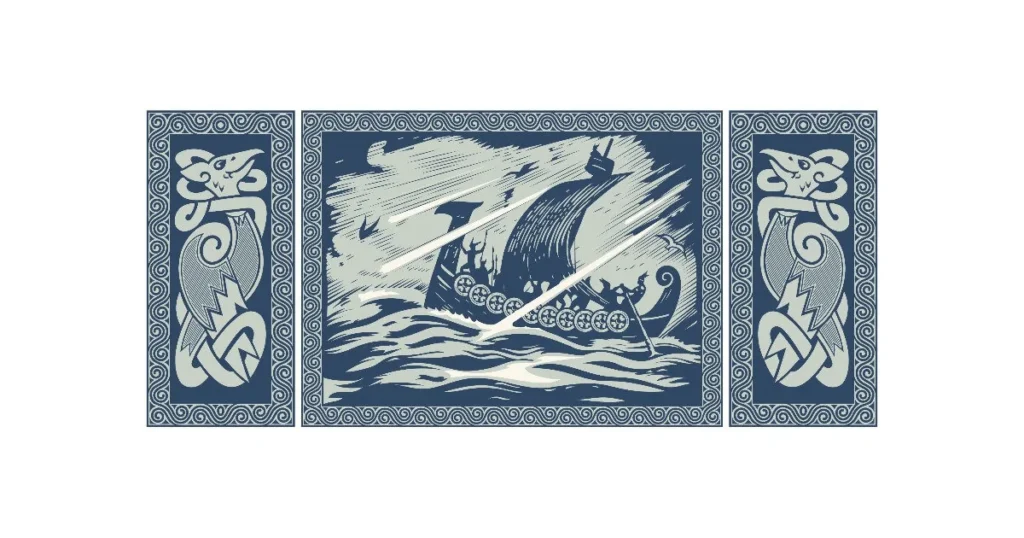
Practical Considerations
- Safety : Dress in thermal layers, waterproof boots, and gloves. Avoid solo trips to remote areas without emergency gear.
- Patience : The aurora is unpredictable plan for multiple nights of hunting.
- Respect Nature : Follow Leave No Trace principles. Avoid disturbing wildlife or damaging fragile landscapes.
This expanded chapter blends technical precision with cultural richness, offering readers a holistic guide to chasing and cherishing the Northern Lights.
Chapter 3: Beyond Waterfalls and Lights – Winter Adventures
Iceland’s winter landscape is a realm of extremes, where fire meets ice, and solitude coexists with exhilaration. This chapter invites you deeper into the season’s hidden gems, offering a richer tapestry of adventure, culture, and natural wonder.
A. Ice Caves and Glaciers: Journey into the Heart of Ice
Vatnajökull Glacier’s Crystal-Blue Ice Caves
Vatnajökull, covering 8% of Iceland, is a labyrinth of ice tunnels, crevasses, and caves. Each winter, meltwater carves ethereal blue chambers beneath its surface, accessible only via guided tours from November to March. Tours depart from nearby towns like Jökulsárlón, with superjeep rides adding drama to the journey. Inside, the caves shimmer with hues of turquoise and cobalt, created by centuries of compressed glacial ice filtering out impurities. Guides explain glaciology and safety, emphasizing the caves’ transient nature they shift and vanish each spring.
Langjökull Glacier’s Ice Tunnels: A Subglacial Universe
Langjökull’s man-made ice tunnels, accessible year-round, plunge 30 meters below the surface. The Into the Glacier tour reveals a network of passages adorned with ice sculptures, educational exhibits, and even a wedding chapel. The experience pairs snowmobiling across the glacier’s expanse with a guided walk through the icy underworld.
Sólheimajökull Glacier: Hiking Among Ice Seracs
For a more rugged adventure, hike Sólheimajökull, a glacial tongue riddled with crevasses and ice ridges. Guided hikes include crampons and ice axes, allowing you to explore seracs (ice towers) and moulins (vertical shafts) while learning about glacial retreat due to climate change.
B. Geothermal Hot Springs: Where Earth’s Heat Meets Winter Chill
Blue Lagoon: A Symphony of Luxury
The Blue Lagoon’s geothermal seawater, rich in silica and algae, is piped from the nearby Svartsengi power plant. Beyond the main lagoon, the Retreat Spa offers private in-water massages and a lava-rock sauna. Winter evenings here are magical steam rises into the frosty air, and the Northern Lights occasionally dance overhead. Pro tip: Book the Blue Lagoon Clinic for a silica mud exfoliation ritual.
Secret Lagoon (Gamla Laugin): Timeless Simplicity
Tucked in Flúðir, this 1891 hot spring maintains a rustic charm. The 38–40°C water is surrounded by geothermal activity a nearby geyser erupts every 5–10 minutes. The pool’s algae-rich water is believed to have healing properties. Visit at dusk to savor solitude under the Milky Way.
Reykjadalur Hot River: A Hike to Warmth
For a wilder soak, hike 3km to Reykjadalur, where a geothermal river flows through a valley. The trail passes fumaroles and steaming earth before reaching a section where you can bathe in warm (but not scalding) water a perfect post-hike reward.
C. Thrill-Seeking in the Icelandic Wilderness
Snowmobiling on Langjökull: Speed Meets Silence
Guided snowmobile tours on Langjökull offer a rush across windswept ice fields. Two-hour rides traverse craters and ice caps, with stops for photos of the endless white horizon. Operators like Arcanum provide all gear, including insulated suits and helmets.
Dog Sledding in Þórsmörk: Huskies and Hidden Valleys
Mush your own team of huskies through Þórsmörk’s snow-draped valleys, framed by the glaciers Eyjafjallajökull and Tindfjallajökull. Tours include a kennel visit to meet the dogs, followed by a 10–15km sled ride. The silence of the landscape, broken only by the huskies’ panting, is profound.
Ice Climbing on Skaftafell’s Glacier Walls
Skaftafell, part of Vatnajökull National Park, offers ice climbing for all skill levels. Guides set up routes on frozen waterfalls and ice walls, teaching techniques to ascend using crampons and ice axes. The Falljökull outlet glacier is a favorite spot, with dramatic icefalls as your backdrop.
D. Reykjavik’s Winter Culture: Cozy, Creative, and Celebratory
Café Culture: Warmth in a Cup
Reykjavik’s cafés are sanctuaries during winter. Try:
- Kaffihús Vesturbæjar : A local favorite for cinnamon rolls and hjónabandssaela (oatmeal cake).
- Reykjavík Roasters : Artisan coffee paired with Icelandic wool blankets on chilly seats.
- Laugavegur Street : Pop into Bæjarins Beztu for a late-night hot dog a Reykjavik institution.
Harpa Concert Hall: Architecture and Aurora
Harpa’s honeycomb glass facade, designed by Olafur Eliasson, mirrors the sea and sky. Attend a performance by the Iceland Symphony Orchestra or visit during the Dark Music Days festival (January), featuring experimental and electronic music. The Northern Lights Bar on the fourth floor offers cocktails with a side of aurora watching.
New Year’s Eve: Fire and Folklore
Icelanders celebrate New Year’s with bonfires (brennur ) at dusk, followed by a televised comedy show, Áramótaskaupið . At midnight, the sky erupts in fireworks many set off by families from their gardens. Locals eat hangikjöt (smoked lamb) and drink malt og appelsín (malt beer and orange soda). Afterward, crowds gather at Hallgrímskirkja church to ring in the year.
Winter Festivals: Embracing the Dark
- Winter Lights Festival (February): Public art installations and free museum entry.
- Þorrablót : Midwinter feasts (late January) featuring traditional foods like hákarl (fermented shark) and svið (singed sheep’s head).
Chapter 4: Practical Tips for Winter Travel in Iceland
(Expanded Edition)
Winter in Iceland is a surreal blend of fire and ice geothermal springs, frozen lava fields, and skies dancing with the Northern Lights. However, its harsh conditions require meticulous planning. Dive into these detailed strategies to navigate Iceland’s winter like a seasoned traveler.
Packing Essentials: Layer Up, Gear Up
Iceland’s winter temperatures average 0°C to -10°C (32°F to 14°F) , but wind chill and sudden storms can plummet feels-like temps. Prioritize functionality and redundancy:
- Base Layers :
- Material : Merino wool (e.g., Icebreaker or Smartwool ) or synthetic fabrics (e.g., Patagonia Capilene ) to wick moisture. Avoid cotton—it traps sweat and chills you.
- Fit : Snug but not restrictive. Pair thermal tops with long underwear.
- Mid-Layers :
- Insulation : Fleece (e.g., The North Face ) or down jackets (Canada Goose or Fjällräven ). Down is lighter but loses warmth when wet; synthetic puffies are safer for damp conditions.
- Vest Option : Add a down/synthetic vest for core warmth without bulk.
- Outer Shell :
- Jacket : Waterproof, windproof, and breathable (e.g., Arc’teryx Beta AR or Columbia Arcadia ).
- Pants : Reinforced waterproof hiking pants (e.g., Kühl Renegade ) or ski bibs.
- Footwear & Accessories :
- Boots : Insulated, waterproof boots with Vibram soles (e.g., Salomon Quest 4D or KEEN Revel IV ). Test grip on ice before renting crampons.
- Crampons : Bring Yaktrax Pro or Kahtoola MICROspikes for icy trails. Glacier hikes require technical crampons (rentable in Reykjavík).
- Gloves : Waterproof mittens (e.g., Hestra Army Leather ) with touchscreen compatibility. Pack extras—wet gloves freeze quickly.
- Head/Neck : Balaclava + beanie combo. Neck gaiter or scarf to seal gaps.
- Extras :
- Backpack : 20–30L waterproof pack (e.g., Osprey Daylite ) for day trips.
- Electronics : Power bank, waterproof phone case, and a camera with cold-resistant batteries.
- Hot Springs Kit : Quick-dry towel, swimsuit, and flip-flops (for Blue Lagoon/Secret Lagoon).
Driving Tips: Navigate Iceland’s Winter Roads
Iceland’s roads are unpredictable, with 60% unpaved and many closed in winter. Heed these rules:
- Vehicle Choice :
- 4×4 Requirement : Mandatory for Highland roads (F-roads) and rural routes. SUVs like Toyota Land Cruiser or modified campers (e.g., Camper.is ) handle snow best.
- Avoid Compact Cars : Small vehicles struggle on icy slopes (e.g., road to Þórsmörk).
- Pre-Trip Prep :
- Check Road Status : Use road.is (Icelandic Road and Coastal Administration) for real-time closures and hazard maps.
- Weather Alerts : Monitor vedur.is for wind gusts (over 25 m/s can flip cars) and snowstorms.
- Route Planning : Stick to the Ring Road (Route 1) if inexperienced. Avoid F-roads (e.g., F206 to Landmannalaugar) in winter—many are impassable.
- Driving Tactics :
- Speed : Keep below 60 km/h (37 mph) on icy roads. Use low gears for descents.
- Black Ice : Look for glossy patches. Test brakes gently before descents.
- Fuel : Fill up whenever possible stations are sparse outside cities.
- Emergency Kit :
- Survival Gear : Emergency blanket, fire starter, shovel, tire chains, tow rope.
- Communication : Local SIM card (e.g., Siminn ) for data access. Download offline maps.
- Food/Water : High-energy snacks (energy bars, nuts) and a thermos of hot cocoa.
- Golden Rule : If in doubt, don’t drive. Icelanders say, “The road is always more dangerous than it looks.”
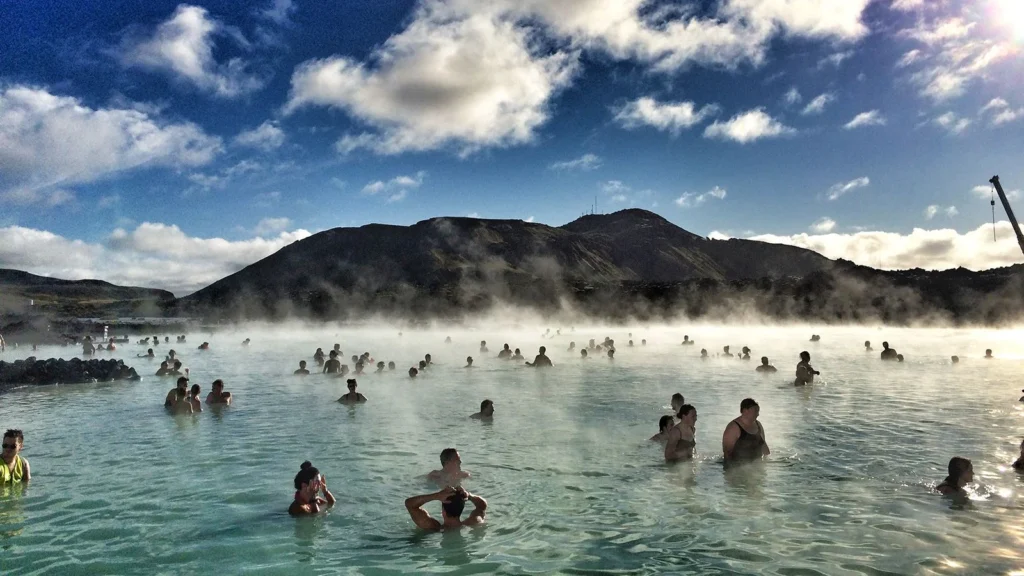
Tours vs. DIY: Balancing Adventure and Safety
Winter amplifies risks avalanches, crevasses, and hypothermia. Decide based on your skill level:
- When to Book a Tour :
- Glacier Hikes/Ice Caves : Guides provide crampons, helmets, and ropes. Companies like Arctic Adventures or Local Guide of Vatnajökull offer small-group trips.
- Northern Lights : Guides use SUVs to escape light pollution and know optimal viewing spots (e.g., Super Jeep tours ).
- Remote Areas : Tours handle logistics for Þórsmörk or the Westfjords, where roads are treacherous.
- DIY Pros :
- Cost Savings : Renting a car splits expenses for groups.
- Flexibility : Explore the Golden Circle (Gullfoss, Geysir, Þingvellir) at your own pace.
- Tips for Success :
- Start early to maximize daylight.
- Use Google Maps Offline and Waze for navigation.
- Join local Facebook groups (e.g., Iceland Travel Forum ) for real-time tips.
Daylight Strategy: Maximize Limited Sunlight
With only 4–6 hours of daylight , timing is everything:
- Morning Priorities (10:00 AM–1:00 PM) :
- Waterfalls : Visit Skógafoss or Seljalandsfoss early for golden-hour photos and safer trails.
- Cultural Sites : Explore Þingvellir’s rift valley or Reykholt’s historical sites.
- Midday Activities (1:00 PM–3:00 PM) :
- Scenic Drives : Route 1 between Vík and Höfn offers glacier views.
- Geothermal Spots : Blue Lagoon (book slots in advance) or Reykjavík’s Sky Lagoon.
- Night Adventures (Post 4:00 PM) :
- Northern Lights : Chase auroras from September–April. Use apps like Aurora Forecast or My Aurora Forecast . Optimal nights are clear, dark, and with KP index ≥3.
- Photography : Use a tripod and manual settings (long exposure, high ISO).
Bonus Tips
- Accommodations : Book stays with hot tubs (e.g., Hotel Rangá ) for post-exploration warmth.
- Food : Try local winter dishes like hangikjöt (smoked lamb) or kleina (twisted doughnuts).
- Safety : Share your itinerary with SafeTravel.is , Iceland’s emergency portal.
Conclusion: Embracing Iceland’s Winter Soul
Iceland in winter is a realm where fire and ice converge, crafting a landscape that feels both primordial and otherworldly. By day, the land is a tapestry of frozen wonder glaciers shimmer like sapphire giants, geothermal springs steam defiantly against the frost, and lava fields, cloaked in snow, whisper tales of volcanic fury stilled by time. The air bites with a crispness that awakens the senses, urging you to breathe deeper, walk slower, and witness how light fractures across ice caves or paints the horizon in hues of rose and gold. Here, the cold is not merely endured; it is revered, a reminder of nature’s power to sculpt beauty from austerity.
But it is when night falls that Iceland’s soul truly ignites. The sky becomes a canvas for celestial artistry the Aurora Borealis spiraling in emerald and violet, or stars so vivid they seem to hum in the dark. In this vast, silent darkness, the world feels infinite, humbling the human spirit and stirring a primal connection to the cosmos. Even the simplest moments a mug of cocoa under the Milky Way, the crunch of snow beneath boots become profound, as if the landscape itself invites you to shed the noise of modernity and rediscover wonder.
A winter journey here transcends tourism. It is a dance with the elements, a fleeting partnership with a land that refuses to be tamed. You do not conquer Iceland’s extremes; you surrender to them, allowing its raw, untamed spirit to mirror your own resilience and curiosity. To leave is to carry a piece of this place within you a quiet reverence for the wild, and the unshakable truth that beauty often thrives in the most unexpected contrasts. Iceland’s winter soul does not just captivate; it transforms.
for more visit Mavlluxury


